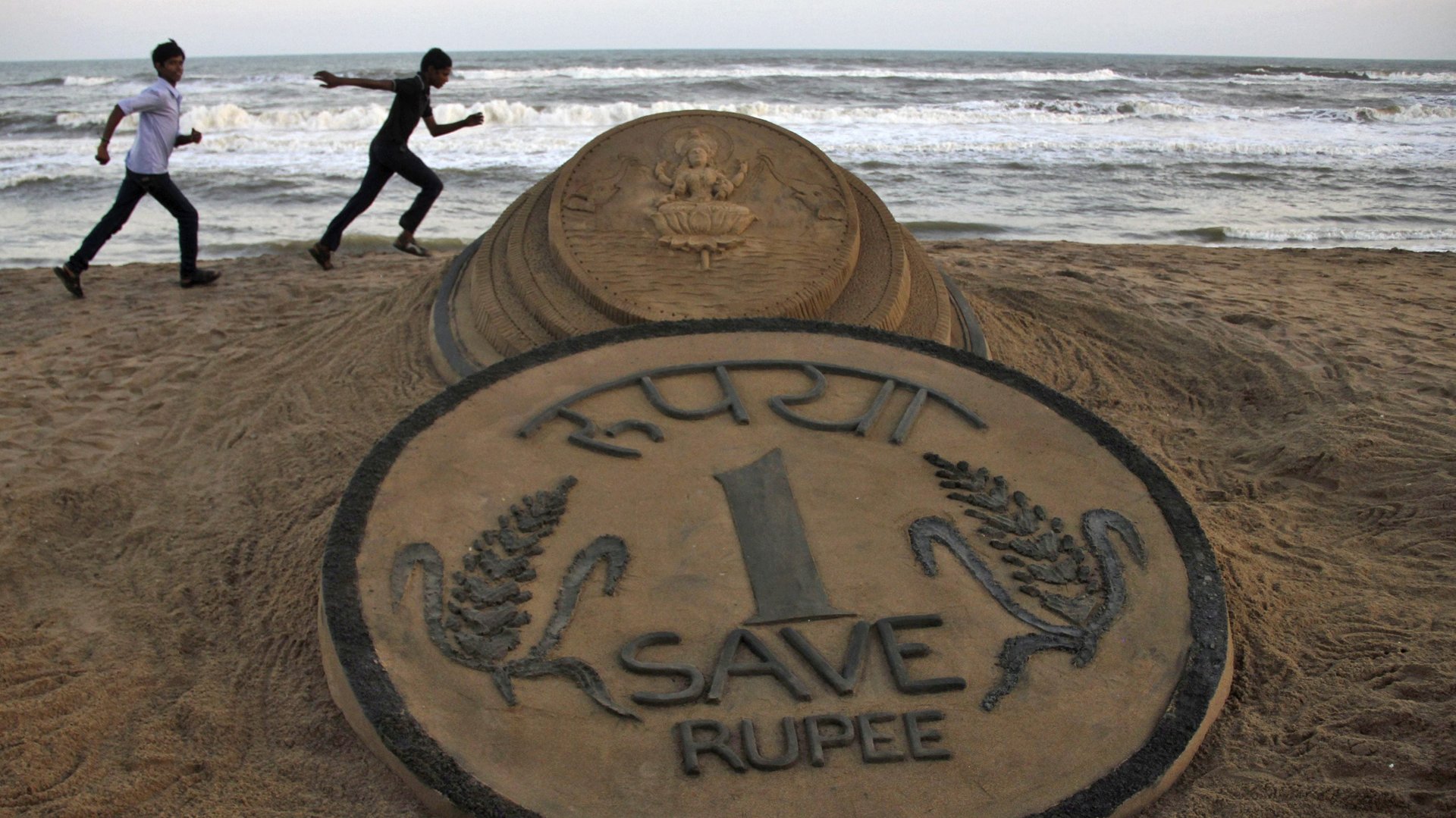Indian rupee hits a record low against the US dollar
This report has been updated.


This report has been updated.
The Indian rupee sank to its lowest ever against the US dollar on March 7 as the war between Russia and Ukraine drove up crude prices to multi-year highs globally.
The rupee fell to 76.9800 per dollar, against its previous low of 76.9200 to a dollar hit in 2020. The surge in crude oil prices is now likely to increase the country’s oil import bill, more so because India imports nearly 80% of its fuel needs.
“The rupee is one of the worst-performing currencies in EMs [emerging markets]. The commentary does not seem to be de-escalating anytime soon, so it is an ongoing pressure,” said Sakshi Gupta, senior economist at HDFC Bank.
She believes the rupee may fall to as low as Rs77.50 a dollar if there is a ban on energy exports from Russia.
Asia’s worst-performing currency
Since India is one of the largest importers of crude oil, it is more vulnerable.
“The INR is more sensitive to supply-side oil shocks,” Barclays said in a note. “Geopolitical risks will likely stay elevated, especially on the terms of trade shock and [India’s] current-account deficit implications.”
An exodus of foreign money
Owing to global risk aversion and increasing inflationary pressures, foreign investors have pulled out a significant amount of their funds from Indian assets. In 2022, overseas investors withdrew total funds worth $4.14 billion, out of which $2.3 billion has flown this month itself.
Today, the benchmark stock indices—Nifty50 and Sensex—fell to the lowest since July 2021.
Analysts estimated the initial share sale of India’s largest state-run insurer Life Insurance Corporation of India, widely referred to as India’s Aramco moment, would have fetched $5 billion-$6 billion of foreign inflows, thereby supporting the rupee.
However, its delay to the next fiscal year has paved the way for further fall in the Indian equities.